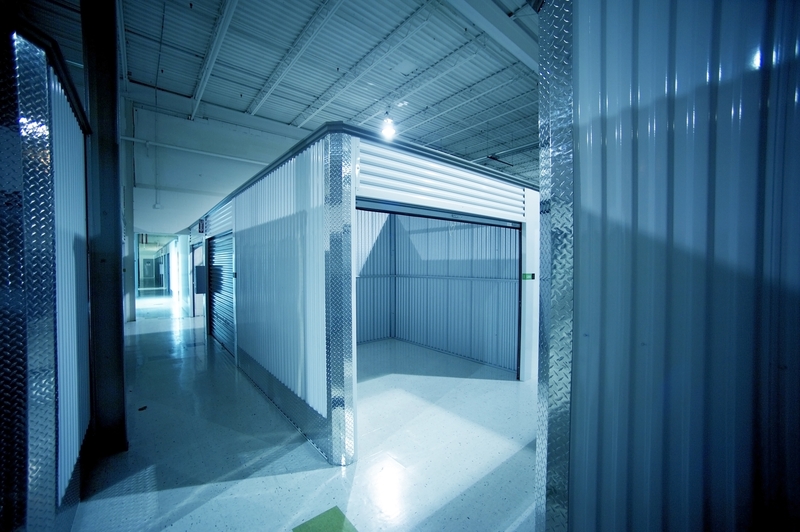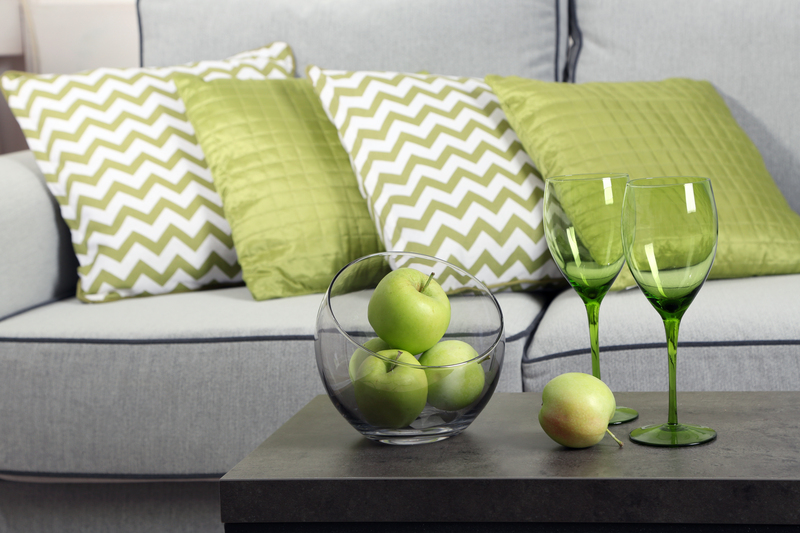Smart Packing Hacks to Make Your House Move Seamless
Posted on 25/05/2025
Smart Packing Hacks to Make Your House Move Seamless
Moving house is one of life's most significant events, but it doesn't have to be daunting. With the right approach, clever packing techniques, and a bit of strategy, you can transform the process from stressful to seamless. In this comprehensive guide, discover actionable smart packing hacks designed to streamline your house move, protect your belongings, and help you settle into your new home faster.

Why Smart Packing is Essential for a Seamless House Move
Whether you're moving across town or across the country, poor packing can add frustration, cost, and risk to your move. Shattered items, lost boxes, and unnecessary trips are often a result of inefficient preparation. Packing smartly is the key to saving time, reducing stress, and ensuring all your cherished items arrive safely at your destination.
Pre-Move Preparation: Laying the Foundation
1. Declutter Before You Pack
- Sort your items: Go room by room and separate what you want to keep, donate, sell, or discard.
- Host a garage sale or use online marketplaces to sell unwanted items and lighten your load.
- Packing only what you need can save you time, boxes, and money on your move.
2. Gather High-Quality Packing Supplies
- Sturdy boxes (assorted sizes)
- Bubble wrap, packing paper, and foam peanuts
- Heavy-duty packing tape and dispenser
- Permanent markers and labels (color-coded if possible)
- Stretch wrap and sealable bags for electronics, cords, and small parts
3. Create a Moving Timeline
- Set packing deadlines by room or category to avoid last-minute chaos.
- Reserve your moving truck or professional movers well in advance.
- Make arrangements for pet and childcare on moving day to keep everyone safe and stress-free.
Room-by-Room: Smart Packing Strategies
4. Master Bedroom Packing Tips
- Use wardrobe boxes: Keep clothes on hangers and transfer them straight from your closet to wardrobe boxes for wrinkle-free packing.
- Vacuum bags for bedding: Compress bulky comforters, blankets, and pillows using vacuum-seal bags to save space.
- Shoes and accessories: Wrap shoes in packing paper and use shoeboxes or small bins. Fill shoes with socks to maintain shape.
5. Kitchen Packing Hacks
- Wrap plates vertically: Stack plates on their edge within boxes, separated by bubble wrap or dish towels, to reduce breakage risks.
- Use pots for storage: Place spice jars, utensils, or small kitchen gadgets inside pots and pans, securing lids with wrap or rubber bands.
- Leverage plastic wrap: Keep utensil trays and cutlery together by tightly wrapping them in plastic. No need to unpack and repack!
- Label box contents and fragility: Be sure to mark boxes containing glassware and fragile appliances as "FRAGILE" in bold letters.
6. Living Room and Electronics Packing Techniques
- Take photos before disconnecting devices: Snap pictures of cable setups for TVs, computers, and game consoles. This makes reassembly at the new home a breeze.
- Original boxes for electronics: If possible, pack electronics in their original boxes for the best protection.
- Label cords and keep accessories together: Use zip ties and sealable bags to group cords, remotes, and small parts - then tape the bag to the device or keep in a clearly labeled box.
7. Bathroom Essentials Packing
- Seal liquids and toiletries: Place plastic wrap under bottle caps and secure with tape to prevent leaks during transit.
- First-day essentials: Create a separate bag or box with toiletries, medications, and towels for immediate use upon arrival. Clearly label this as "First-Day Bathroom Kit."
8. Children's Room and Nursery Packing Suggestions
- Box toys and books together: Keep favorite toys and bedtime books in an easily accessible box to comfort your child in the new home.
- Disassemble large furniture: Take apart cribs, beds, and storage units as recommended by the manufacturer, keeping hardware small parts in labeled bags.
Expert Packing Hacks for a Stress-Free Move
9. Color-Coding and Labeling System
- Assign a color to each room: Use colored labels, stickers, or tape to designate which boxes belong where. This speeds up unloading and unpacking.
- Detailed inventory: Write a brief description of box contents on the label or use a number system with a master inventory list on your phone.
10. Use What You Have
- Luggage, baskets, and bins: Save on boxes by filling suitcases, hampers, laundry baskets, and reusable grocery bags with soft goods or heavier items.
- Soft furnishings as padding: Wrap delicate decor and tableware in towels, blankets, or even t-shirts to protect them during the move.
11. Optimize Space in Boxes
- Heavy items on the bottom: Always start with books or heavier objects and layer lighter, breakable ones on top.
- Don't overpack: No box should weigh more than you can comfortably lift. Aim for 40 pounds or less per box to avoid accidents.
12. Keep Essentials Separate
- Packing an "Essentials Box" ensures you have access to vital items like chargers, a change of clothes, snacks, important documents, medications, and basic cleaning supplies upon arrival.
Moving Day: Last-Minute Packing Wisdom
13. Conduct a Final Walk-Through
- Check closets, cabinets, and drawers for any overlooked items.
- Take photos of empty rooms as evidence of the property's condition for your landlord or new owners.
14. Protect Floors and Doorways
- Use old shower curtains, drop cloths, or flattened cardboard in entryways and hallways to prevent damage as boxes and furniture are moved out.
15. Smart Loading Techniques
- Heaviest and largest items first: Place furniture, appliances, and big boxes at the back of the moving truck and stack lighter boxes on top.
- Secure fragile items last: Keep your most delicate boxes, such as those with glass or electronics, on top away from shifting during transit.
Unpacking with Ease: Post-Move Tips
16. Start With Essentials
- Unpack your essentials box and set up beds, bathrooms, and the kitchen first for a comfortable first night.
17. Room-by-Room Approach
- Prioritize high-use rooms: Focus on main living spaces before decorative or less essential rooms to quickly make the new house feel like home.
18. Recycle Packing Materials
- Break down boxes and donate or recycle them to minimize waste and keep your new space clutter-free.
Additional Top-Rated House Moving and Packing Tips
- Take breaks: Moving is physically and emotionally exhausting; rest to avoid fatigue and mistakes.
- Enlist help: Don't hesitate to ask friends or hire professionals for packing, loading, or childcare support.
- Update your address: Notify the post office, banks, subscriptions, and friends of your new address.
- Photograph valuables: Document the condition of expensive or sentimental items before packing for insurance purposes.

Frequently Asked Questions about Smart Packing for Moving
What is the most efficient way to pack for a house move?
The most efficient way to pack is by decluttering first, collecting quality packing supplies, packing by room, and labeling everything clearly. Using a checklist and packing essentials last are crucial hacks for a streamlined process.
How far in advance should I start packing?
Start packing non-essentials (items you use rarely) 4-6 weeks before your move. Approach packing in stages, gradually including daily use items as moving day approaches.
How do I keep my fragile items safe during the move?
Wrap fragile items in bubble wrap or towels, use plenty of cushioning, and clearly mark boxes as "FRAGILE". Plates should stand upright in boxes, and avoid overpacking to prevent breakage.
What should I put in my essentials box?
Your essentials box should include toiletries, basic cookware, a couple of plates and utensils, phone chargers, medication, documents, snacks, and one set of clothes per family member.
Conclusion: Moving Doesn't Have to Be Stressful
Smart packing hacks can transform your house move from a dreaded ordeal into a smooth, successful transition. Efficient packing, strategic use of resources, and careful labeling are your best friends in making your move seamless. By staying organized and giving yourself plenty of time, you can protect your possessions, reduce anxiety, and quickly make your new house feel like home. Ready to move? Start implementing these smart packing tricks today and guarantee a seamless transition to your new chapter!



